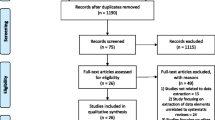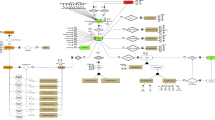Abstract
Ontologies and other schemes are useful for allowing semantic tagging of documents for many applications on the semantic web. Representing uncertainty on the semantic web is becoming increasingly common, using ontologies and other techniques. Ontology and declarative tools allow documents using concepts contained in these ontologies to be reasoned about using computer systems. Very large ontologies and vocabularies have been created; however, users may find it difficult to select the correct concept or term when there are large numbers of items that on face value appear to represent the same idea. Creating subsets of ontologies is a popular approach to solve this problem but this may not fit well with the need to deal with complex domains. However, crowdsourcing techniques, which harness the power of large groups, may be more effective than document analysis or expert opinion. In crowdsourcing, large numbers of people collaborate by performing relatively simple tasks usually using applications distributed via the World Wide Web. This approach is being tested in the medical domain using a very large clinical vocabulary, SNOMED CT.







Similar content being viewed by others
Abbreviations
- SNOMED:
-
Systematized nomenclature of medicine
- CT:
-
Clinical terms SNOMED CT
References
Acampora G, Gaeta M, Loia V, Vasilakos AV (2010) Interoperable and adaptive fuzzy services for ambient intelligence applications. ACM Trans Auton Adapt Syst 5(2):1–26. doi:10.1145/1740600.1740604
Anderson DP, Cobb J, Korpela E, Lebofsky M, Werthimer D (2002) SETI@home: an experiment in public-resource computing. Commun ACM 45 (11):56–61. doi:http://doi.acm.org/10.1145/581571.581573
Aniket K, Ed HC, Bongwon S (2008) Crowdsourcing user studies with mechanical turk. In: Paper presented at the Proceeding of the twenty-sixth annual SIGCHI conference on Human factors in computing systems, Florence, Italy
Calegari S, Loregian M (2006) Using dynamic fuzzy ontologies to understand creative environments. In: Flexible query answering systems, pp 404–415
Michael F. Chiang JCH, Alexander C. Yu, Daniel S. Casper, James J (2006) Cimino, and Justin Starren reliability of SNOMED-CT coding by three physicians using two terminology browsers. AMIA Annu Symp Proc 2006:131–135
Dolin RH, Alschuler L, Beebe C, Biron PV, Boyer SL, Essin D, Kimber E, Lincoln T, Mattison JE (2001) The HL7 clinical document architecture. J Am Med Inform Assoc 8(6):552–569
Huberman BA (2008) Crowdsourcing and attention. Computer 41(11):103–105
Huff SM, Rocha RA, McDonald CJ, De Moor GJE, Fiers T, Bidgood WD Jr, Forrey AW, Francis WG, Tracy WR, Leavelle D, Stalling F, Griffin B, Maloney P, Leland D, Charles L, Hutchins K, Baenziger J (1998) Development of the logical observation identifier names and codes (LOINC) vocabulary. J Am Med Inform Assoc 5(3):276–292
Kalra D, Beale T, Heard S (2005) The openEHR foundation. Studies Health Technol Inform 115:153
O’Malley KJ, Cook KF, Price MD, Wildes KR, Hurdle JF, Ashton CM (2005) Measuring diagnoses: ICD code accuracy. (International Classification of Diseases). Health Serv Res 40(5):1620
O’Neil MP C, Read J (1995) Read codes version 3: a user led terminology. Methods Inf Med 34(1/2):187–192
Oreilly T (2007) What is Web 2.0: design patterns and business models for the next generation of software. Commun Strateg No 1, p 17, First Quarter
Parry D (2004) Fuzzification of a standard ontology to encourage reuse. In: The 2004 IEEE International Conference on Information Reuse and Integration (IEEE IRI-2004), Las Vegas USA, pp 582–587
Patrick J, Wang Y, Budd P, Rector A, Brandt S, Rogers J, Herkes R, Ryan A, Vazirnezhad B (2008) Developing SNOMED CT subsets from clinical notes for intensive care service. Health Care and Informatics Review Online (HCIRO). Health Care and Informatics Review Online (HCIRO)
Peleg M, Tu S (2006) Decision support, knowledge representation and management in medicine. In: Haux R, Kulikowski C (eds) IMIA Yearbook 2006: assessing information—technologies for health. IMIA, Heidelberg, pp 72–80
Peter GG (2005) HIT and MIS: implications of health information technology and medical information systems. Commun ACM 48(10):68–74. doi:10.1145/1089107.1089141
Rivadeneira AW, Gruen DM, Muller MJR (2007) Getting our head in the clouds: toward evaluation studies of tagclouds. Paper presented at the Proceedings of the SIGCHI conference on Human factors in computing systems. San Jose, California
Sanchez E, Yamanoi T (2006) Fuzzy ontologies for the semantic web. In: Flexible query answering systems, pp 691–699
Shadbolt N, Hall W, Berners-Lee T (2006) The semantic Web revisited. IEEE Intell Syst Appl 21(3):96–101
Singh P, Lin T, Mueller ET, Lim G, Perkins T, Zhu WL (2002) Open mind common sense: knowledge acquisition from the general public. In: On the move to meaningful internet systems 2002: CoopIS, DOA, and ODBASE : Confederated International Conferences CoopIS, DOA, and ODBASE 2002. Proceedings, pp 1223–1237
Siorpaes K, Simperl E (2009) Human intelligence in the process of semantic content creation. World Wide Web 13(1):33–59
Spackman K (2005) Rates of change in a large clinical terminology: three years experience with SNOMED clinical terms. AMIA Annu Symp Proc 714–718
Stoilos G, Simou N, Stamou G, Kollias S (2006) Uncertainty and the semantic web. IEEE Intell Syst 21(5):84–87
Tho QT, Hui SC, Fong ACM, Tru Hoang C (2006) Automatic fuzzy ontology generation for semantic Web. IEEE Trans Knowl Data Eng 18(6):842–856
Thomas ML, Mark OG, Christian T, Benedikt F, Daniel K, Michael K, Henning S, Berthold BW (2003) Content-based image retrieval in medical applications for picture archiving and communication systems. In: Huang HK, Osman MR (eds) SPIE, pp 109–117
U.S. National Library of Medicine (2001) Medical Subject Headings. U.S. National Library of Medicine,. http://www.nlm.nih.gov/mesh/. Accessed 11 January 2002
von Ahn L, Maurer B, McMillen C, Abraham D, Blum M (2008) reCAPTCHA: human-based character recognition via web security measures. Science 321(5895):1465–1468. doi:10.1126/science.1160379
Widyantoro DH (2001) Using fuzzy ontology for query refinement in a personalized abstract search engine. In: Joint 9th IFSA World Congress and 20th NAFIPS International Conference, pp 610–615
Wollersheim D, Rahayu W (2002) Methodology for creating a sample subset of dynamic taxonomy to use in navigating medical text databases. In: Database engineering and applications symposium, 2002. In: Proceedings. International 2002, pp 276–284
World Health Organization (2001) ICD-10: The International Statistical Classification of Diseases and Related Health Problems, tenth revision. WHO. http://www.who.int/whosis/icd10/. Accessed 11 January 2002
Yanbe Y, Jatowt A, Nakamura S, Tanaka K (2007) Can social bookmarking enhance search in the web? In: Proceedings of the 2007 conference on Digital libraries, pp 107–116
Zadeh L (1965) Fuzzy sets. J Inf Control 8:338–353
Zimmermann H (1980) OSI reference model—the ISO model of architecture for open systems interconnection. IEEE Transactions on Commun [legacy, pre 1988] 28(4):425–432
Acknowledgments
The Authors would like to offer their thanks to the women’s health ultrasound department at Auckland District Health Board, especially Kathy Dryden, Chief Sonographer. SNOMED CT use in New Zealand relies on the work of NZHIS and in particular Ted Cizadlo and his team.
Author information
Authors and Affiliations
Corresponding author
Rights and permissions
About this article
Cite this article
Parry, D.T., Tsai, TC. Crowdsourcing techniques to create a fuzzy subset of SNOMED CT for semantic tagging of medical documents. Soft Comput 16, 1119–1127 (2012). https://doi.org/10.1007/s00500-011-0787-z
Published:
Issue Date:
DOI: https://doi.org/10.1007/s00500-011-0787-z




